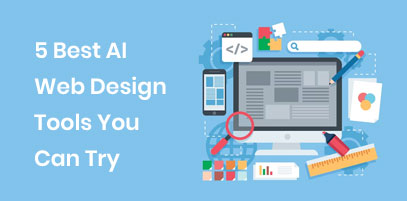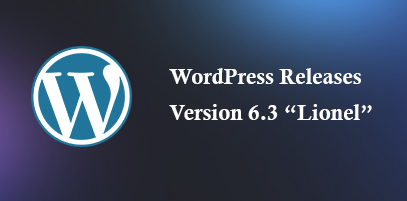Distributed Cloud
By :- Ilika - Web Guru Awards Team

Distributed cloud is that the application of cloud computing technologies to interconnect knowledge and applications served from multiple geographic locations. Distributed, in associate info technology (IT) context, means one thing is shared among multiple systems which can even be in several locations. Distributed cloud speeds communications for international services and allows additional responsive communications for specific regions.
Cloud suppliers use the distributed model to change lower latency and supply higher performance for cloud services. On the far side of the cloud supplier context, 2 alternative samples of distributed cloud area unit public resource computing and also the volunteer cloud.
Public resource computing could be a cross between cloud computing and distributed computing that involves computers in geographically distributed locations connected to collaborate on compute-intensive and/or computer-intensive tasks. Some samples of this area unit Folding @home, BOINC and SETI @home.
In a volunteer cloud, the resources of member computers area unit connected through one service or hub to collaboratively construct and tack together cloud infrastructure.
Discover why the distributed cloud is that the next generation of cloud computing, at the side of its benefits compared with public cloud, hybrid cloud, and edge computing.
Organizations that hesitate to conceive of a complete migration to the general public cloud model use a mix — or hybrid — of private-cloud-inspired and public cloud forms of computing. That's why, over the past 3 years, Gartner consumer requests to debate hybrid cloud have fully grown 15 August 1945.
The next generation of cloud computing retains the benefits of cloud computing whereas extending the vary and use cases for the cloud.
Yet, hybrid cloud breaks these terribly worth propositions: One a part of a hybrid cloud is architected, owned, controlled, and operated by the client and also the alternative by the general public cloud supplier. The client retains responsibility for his or her part of the operation however cannot leverage the capabilities (such because of the skills, innovation pace, investments, and techniques) of the general public cloud supplier.
Newer generations of prepacked hybrid cloud offerings will facilitate cut back the impact of those shortcomings. Distributed cloud, successive generation of cloud computing, retains the benefits of cloud computing whereas extending the vary and use cases for cloud. CIOs will use distributed cloud models to focus on location-dependent cloud use cases that may be needed in the future.
Cloud services from public cloud suppliers become “distributed” bent specific and varied physical locations. Operations being physically nearer to people who would like the capabilities change low-latency reasons. This conjointly ensures the same management plane to administer the cloud infrastructure from public to personal cloud and extend systematically across each environment. Taken along, this stuff will deliver major enhancements in performance thanks to the elimination of latency problems, also as cut back the danger of world network-related outages or management plane inefficiencies. The distributed cloud can evolve in 2 distinct phases. Part One can comprise a like-for-like hybrid.
The distributed cloud creates strategically placed substations of cloud reason, storage, and networking which will act as shared cloud pseudo availability zones. Gartner uses the term “substations” to evoke the image of subsidiary stations, for example, branch post offices, wherever folks gather to use services.
Because distributed cloud substations area unit the responsibility of the originating public cloud supplier, the key cloud worth propositions of productivity, innovation, and support stay intact. In fact, by 2024, most cloud service platforms can offer a minimum of some distributed cloud services that execute at the purpose of would like.
In Gartner’s ideal distributed cloud, the cloud supplier assumes responsibility for the distributed cloud’s “operation, governance, maintenance, and updates.” And nonetheless, the report concedes that this can be impractical.
Gartner predicts a couple of completely different business models can arise as this way of cloud spreads in adoption. The business models area unit somewhat the same as the software-, infrastructure-, and platform-as-a-service models that area unit presently common.
A computer code business model is wherever a client “buys and owns a hardware platform and computer code layer with a set of the providers’ cloud services.” The client then is to blame for the operations, maintenance, or updates to the computer code and hardware. A client will use a managed service supplier to handle the customer’s responsibilities.
A movability layer business model is wherever the client is accountable for the hardware platform and also the service supplier is accountable for the computer code overlay.
A distributed service business model involves a supplier delivering a version of cloud services in very hardware and computer code combination. The supplier would be to blame for managing and change the hardware and computer code. primarily, the distributed service approach is analogous to a software-as-a-service (SaaS) choice.
How distributed cloud works?
You may have detected distributed computing, within which application elements area unit unfold across completely different networked computers, and communicate with each other through electronic messaging or arthropod genus, with the goal of up overall application performance or maximize computing potency.
Distributed cloud goes a large step any by distributing a public cloud provider's entire reason stack to where a client would possibly like it - on-premises within the customer's own knowledge center or personal cloud, or off-premises in one or additional public cloud knowledge centers that will or might not belong to the cloud supplier.
In effect, distributed cloud extends the provider's centralized cloud with geographically distributed micro-cloud satellites. The cloud supplier retains central management over the operations, updates, governance, security, and reliableness of all distributed infrastructure. And also the client accesses everything - the centralized cloud services, and also the satellites where they're set - as one cloud and manages it all from one management plane. During this means, as analyst Gartner puts it, distributed cloud fixes with hybrid cloud and hybrid multi-cloud breaks.
Use cases for distributed cloud and edge computing
Distributed cloud and edge computing support everything from simplified multi-cloud management to improved measurability and development speed, to the preparation of progressive automation and call support applications and practicality.
- Improved hybrid cloud: Multicloud visibility and manageability: Distributed cloud will facilitate any organization gains bigger management over its hybrid multi-cloud infrastructure by providing visibility and management from one console, with one set of tools.
- Efficient, cost-efficient measurability and agility: It's high-ticket and long to expand a passionate knowledge center, or to make out new knowledge center locations in numerous geographies. With the distributed cloud, a corporation will expand to existing infrastructure or edge locations while not physical buildout, and may develop and deploy anyplace within the setting quickly, mistreatment identical tools and personnel.
- Easier trade or localized restrictive compliance: Several knowledge privacy laws specify that a user's personal data (PI) cannot travel outside the user's country. Distributed cloud infrastructure makes it a lot easier for a corporation to method PI in every user's country of residence. Process knowledge at its supply may also change compliance with knowledge privacy laws in attention, telecommunications, and alternative industries.
- Faster content delivery: A content delivery network (CDN) deployed on a distributed cloud will improve streaming video content performance - and also the user expertise - by storing and delivering video content from locations nearer to end-users.
What’s next for the distributed cloud?
In sensible terms, the distributed cloud can evolve in 2 distinct phases. Section One can encompass a like-for-like hybrid, wherever enterprise customers can purchase cloud substations to mimic the promise of a hybrid cloud and avoid latency-based issues.
These customers won't at first embrace the thought of a gap in their substations to close neighbors’, whether or not geographical or industry-based, and can keep the station on their premises to themselves. This can have the impact of sanctioning true hybrid cloud by having public cloud suppliers take responsibility for everything. The next-generation cloud can work supported an assumption that cloud substations are every place — very similar to Wi-Fi hot spots. Phase Two, or next-gen cloud, can encompass utilities, universities, town governments, and telcos, among others, shopping for cloud substations and gap them to be used by close neighbors’. This can begin to determine the thought that distributed cloud represents the muse of the ensuing generation of cloud computing. This can additionally replicate the necessity for the time of distributed cloud. The next-generation cloud can work supported an assumption that cloud substations are every place — very similar to Wi-Fi hot spots.
Recent Topics
-
 WordPress.com Launches 100-Year Web Hosting Plan
WordPress.com Launches 100-Year Web Hosting PlanWordPress, the platform that helps people create websites, now offers something rare. It has taken a bold leap into the future with its 100-year web hosting plan. Yo...
Read MoreBy :- Laura Davidson
-
 5 Best AI Web Design Tools You Can Try
5 Best AI Web Design Tools You Can TryWhy bother with all the effort of creating websites manually when we have amazing AI tools? In fact, using these tools has become one of the most-practiced ...
Read MoreBy :- Tiana K
-
 Role of Animation and Micro-Interactions in User Experience
Role of Animation and Micro-Interactions in User ExperienceIn today's world, almost every brand wants to create a user-friendly interface for its customers. The main aim behind this is to increase customer base and revenue. Now, when it comes...
Read MoreBy :- Laura Davidson
-
 Web Design Trends to Watch Out for in 2024
Web Design Trends to Watch Out for in 2024Web design is a constant-evolving technology landscape. As a web designer, staying tuned with web design trends and keeping your designs up-to-date is important. These trends will affect ...
Read MoreBy :- Esther McGuinness
-
 The Power of Storytelling in Web Design Engaging Users with a Narrative
The Power of Storytelling in Web Design Engaging Users with a NarrativeStories never fail to engage listeners. That’s why web designers are leveraging the art of storytelling in their designs. In web designing, storytelling goes beyond merely usin...
Read MoreBy :- Navkiran Dhaliwal
-
 WordPress Releases Version 6.3 ?“Lionel”
WordPress Releases Version 6.3 ?“Lionel”WordPress 6.3 “Lionel” is out! Now, you’ll be able to create more beautiful and compelling websi...
Read MoreBy :- Tiana K
